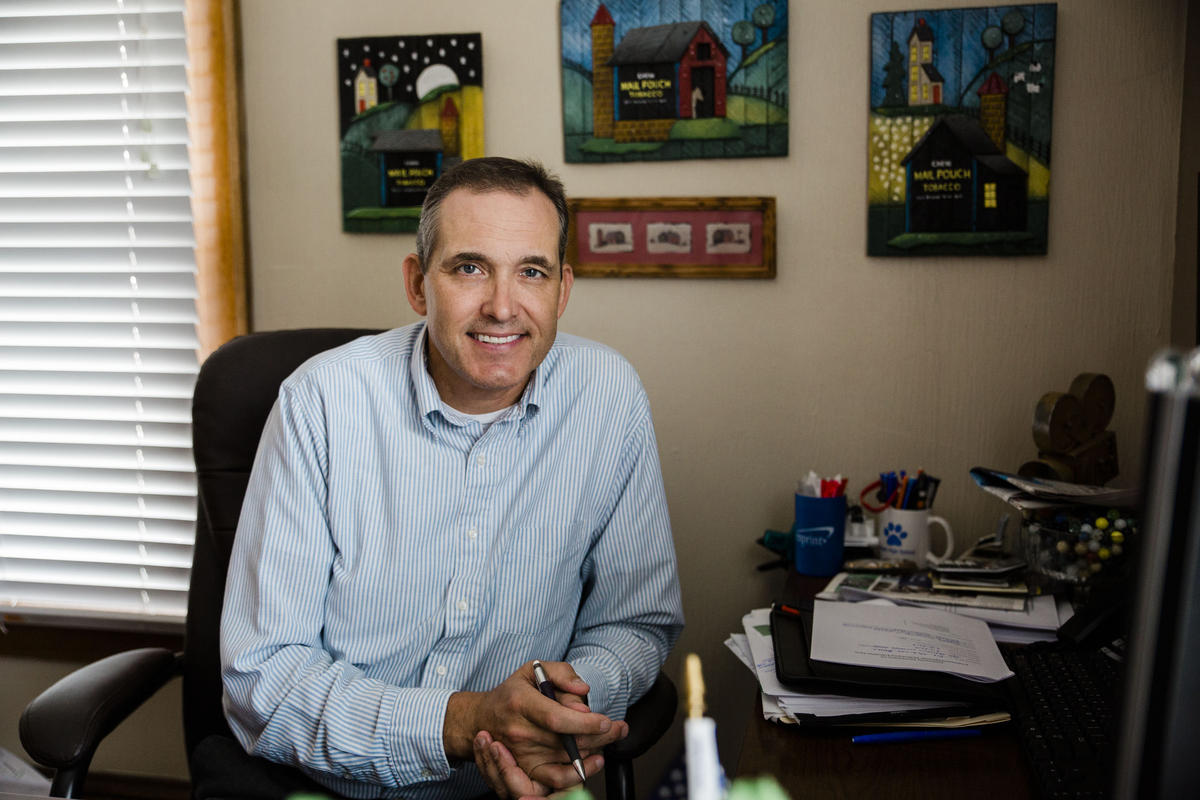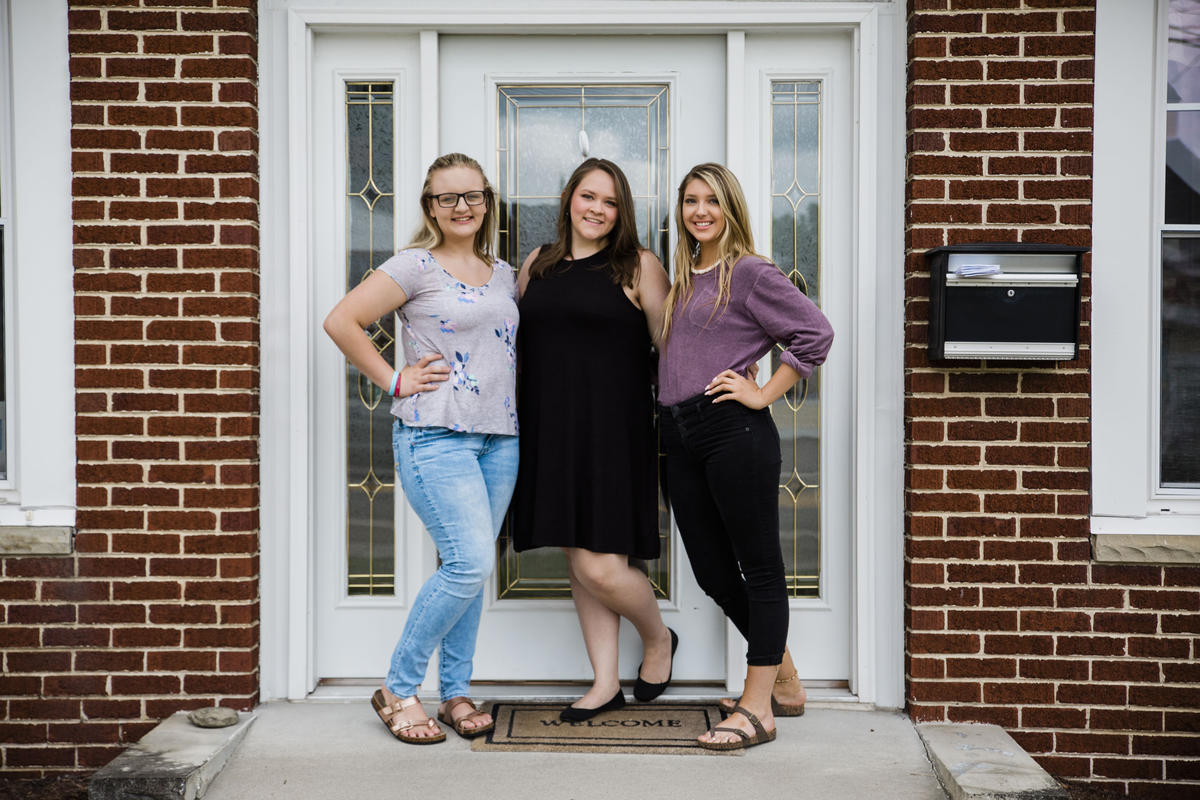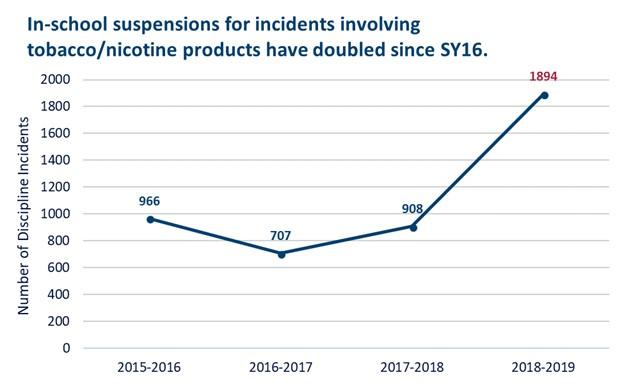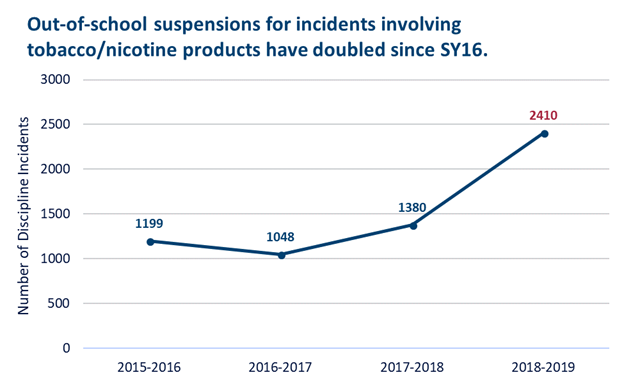In one year, from 2017 to 2018, tobacco usage among American youth skyrocketed by almost 40 percent. The culprit? E-cigarettes.
The trend reverses decades of public health efforts to combat tobacco consumption, which alarms people like Mercer County Commissioner Greg Puckett.
At his office, Puckett pulls out a box filled with tobacco products confiscated during one month this spring at a local high school.
“So we’ve got Juul pods here, we’ve got snuff of course, we’ve got a couple packs of cigarettes, just a lighter, some additional juice that goes into the vapes.” He sifts through the contents with a hand, holding up some of the items one by one.

“And this is just indicative of the one school,” he said. “Now we know other schools use products more and it’s not like these are the only ones — these are just the ones that got caught.”
Both in and out of school suspensions related to tobacco products doubled from 2016 to 2018 in West Virginia, according to the Department of Education. It is worth noting the coding doesn’t break out vaping-specific data, but anecdotally e-cigarettes are responsible for the uptick.
Puckett points to a cartridge filled with liquid containing flavor and nicotine — called a Juul pod that looks, to the untrained eye, not dissimilar to a USB drive. Which most older teachers, assume it is.
“So the whole philosophy is to make it as accessible as possible, as concealable as possible,” he explained.
The rate of kids in America using vaping devices between 2017 and 2018 grew from about 30 percent of high school kids to almost 40 percent.
There isn’t data specific to West Virginia yet for the same time period, but anecdotally, the problem is just as bad, if not worse here.
“We have a tobacco class once a year that if you get caught with tobacco products on school property, you have to go to this class and I think this year there was like 150 kids who had to attend,” said Bailee Darago, a 16-year-old student at Princeton Senior High School. Her high school only has about 300 kids.
School officials didn’t respond by time of publication to verify that statement.
But in an email, a representative from the West Virginia Department of Education said there isn’t a specific course code for tobacco/nicotine discipline consequence classes, but school staff can refer students to a tobacco cessation program if they’re caught with tobacco on school property.
In Mercer County, West Virginia, where Princeton Senior High School is located, referrals to the cessation program increased from 1 in 2017-18 to 24 the following year.
“You know over [the] years, and the last 15-20 years, we were seeing tobacco use decline among our youth and really seeing some dramatic progress in that arena, which was so exciting,” said Dr. Catherine Slemp, the new West Virginia commissioner for public health. “But with the introduction of vaping and e-cigarettes and Juuls, that students really think of as not a problem or that it’s cool to do that, we are reversing that trend dramatically. That has really significant long-term implications.”
E-cigarettes hit the market in the early 2000s, but an e-cigarette product called Juul, launched in 2015, has taken the industry by storm — mostly by marketing itself as a sleek, low-profile way to quit smoking.
While some people might benefit from switching from cigarettes to e-cigarettes, Slemp said for kids, e-cigarettes can have the opposite effect.
“When teenagers begin to use tobacco at an early age, they are far, far, far more likely to become lifelong smokers,” said Slemp. “Because the brain is still developing, it’s developing its connections and how it works, when we’re young and into our early 20s actually. And so it actually changes the chemistry and the addiction of the brain. So by youth having access to these products we are addicting our next generation to tobacco at higher rates than ever.”

A 2018 study from West Virginia University School of Medicine found that if teenagers vape into adulthood, the cardiovascular effects are just as bad as if they’d smoked cigarettes.
Of course, kids often don’t think that it’s a big deal.
“I think that people think that vaping is actually safer than actually smoking and that’s not the case,” said 16-year-old Darago, who is a member of the anti-substance abuse program Students Against Destructive Decisions.
“The science says that one Juul pod contains as much nicotine as a pack of cigarettes and the flavoring has chemicals in it that’s also harmful to your body,” she said.
Upstairs at Community Connections, commissioner Greg Puckette reads a label aloud as he begins putting the box of confiscated tobacco products away.
“Candy king, on salt. It’s sweetish, you can take it and smell it, it’s got a particular flavor to it. If I can get it open…so you can see it’s a very sweet smell and of course it’s very attractive to someone who’s young and says ‘Oh, that’s just like candy — it’s got it even here — candy king on salt!’”
There’s also a warning that says, “this product contains nicotine, nicotine is an addictive chemical.” But Puckett said kids don’t pay any attention to it.
“Because young people think they live forever.”
Yet health commissioner Slemp says tobacco has massive economic consequences for the state.
“We spend in West Virginia a billion dollars a year on tobacco-related health care costs alone, another billion dollars on productivity loss.”
In an effort to curb the epidemic of youth vaping, San Francisco just became the first U.S. city to ban the sale of e-cigarettes. Students like Darago say laws in West Virginia don’t discourage vaping at all.
“It’s easier for high school students because high school students are turning 18 and it’s legal for them to do stuff like that, but it’s still not safe.”
In the past legislative session, the state Senate did pass a bill that would raise the minimum tobacco age to 21. It died in committee in the House.
This article was originally published by West Virginia Public Broadcasting.
Appalachia Health News is a project of West Virginia Public Broadcasting, with support from Marshall Health and Charleston Area Medical Center.





